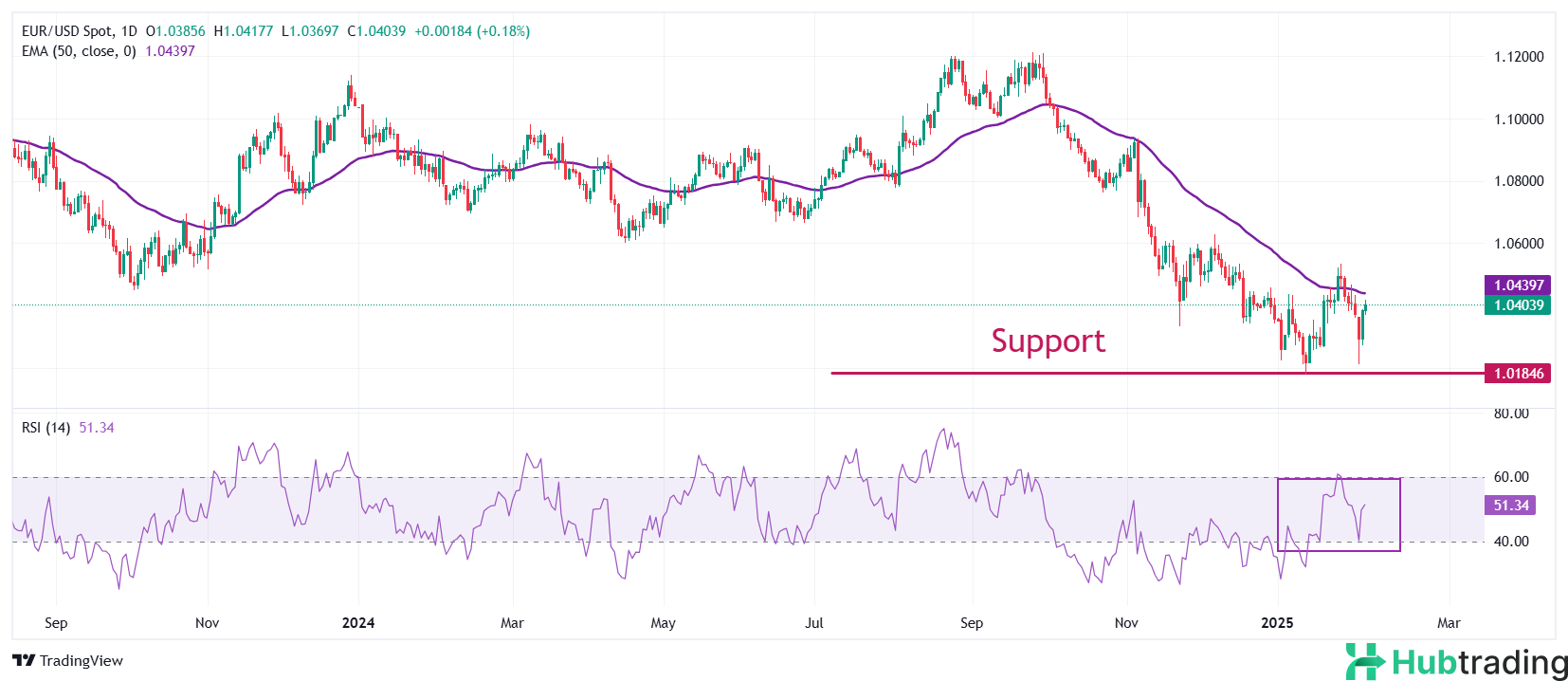- EUR/USD struggles to stay above 1.0400 as strong US ADP Employment data supports the US Dollar.
- Market sentiment improves with expectations of a limited trade war between the US and China.
- The ECB is anticipated to keep cutting interest rates, driven by confidence in the ongoing disinflation trend toward its 2% target.
EUR/USD struggles to extend its rally above 1.0430 in Wednesday's North American session. The upward momentum of the major currency pair is stalling as the US Dollar gains strength following the release of stronger-than-expected US ADP Employment Change data for January. The ADP Research Institute reported that 183K private-sector jobs were added, exceeding forecasts of 150K and the previous revision of 176K (up from 122K).
The upbeat employment data is fueling expectations that the Federal Reserve (Fed) will keep interest rates in the 4.25%-4.50% range for a prolonged period. Last week, Fed Chair Jerome Powell indicated that policy adjustments would be considered only when there is "real progress in inflation or signs of labor demand weakening."
Looking ahead, the US Nonfarm Payrolls (NFP) data for January, due on Friday, will be the next key focus for the US Dollar, providing a clearer picture of the labor market's health.
The US Dollar Index (DXY), which tracks the Greenback against six major currencies, has slightly rebounded after hitting a weekly low near 107.40. Earlier, the USD had weakened as market sentiment improved with expectations that the US-China trade war would remain contained. China has retaliated against US tariffs by imposing levies on several US exports, including agricultural equipment, vehicles, and energy items such as coal and LNG. Investors anticipate that President Donald Trump will continue to use tariffs as a negotiating tool, with his delay of 25% tariffs on Canada and Mexico seen as a political strategy rather than a permanent policy shift.
Daily Digest Market Movers: EUR/USD Gains at USD 's Expense
- EUR/USD rises as the Euro (EUR) gains against the US Dollar (USD), despite mixed performance against other major currencies. However, the upside remains limited due to expectations that the European Central Bank (ECB) will continue its rate-cutting cycle, with policymakers confident that inflation will return to the 2% target this year.
- ECB Vice President Luis de Guindos, in an interview with Slovak newspaper Hospodarske Noviny on Wednesday, stated that inflation is approaching the ECB's target but warned of a "small uptick in the coming months due to energy prices." When asked about the ECB's rate-cut trajectory, he said, "Even if our current path seems clear, no one knows where interest rates will ultimately settle."
- The ECB cut its Deposit Facility rate by 25 basis points (bps) to 2.75% last week, maintaining a cautious stance on policy easing. Traders anticipate three additional rate cuts over the next three meetings.
- Concerns over US-EU trade tensions weigh on market sentiment, as investors fear the European Union (EU) may be the next target for US President Trump's tariff threats. Over the weekend, Trump stated that tariffs on the EU are inevitable, claiming that "they've really taken advantage of us."
Technical Analysis: EUR/USD rises above 1.0400

EUR/USD rebounds from a three-week low of 1.0210 on Monday, climbing to near 1.0420. However, the pair remains below the 50-day Exponential Moving Average (EMA) at 1.0440, indicating that the overall trend is still bearish. The 14-day Relative Strength Index (RSI) fluctuates between 40.00 and 60.00, signaling a sideways movement.
Support levels are found at the January 13 low of 1.0177 and the psychological 1.0100 mark. On the upside, the key resistance level for the Euro bulls is at 1.0500.





